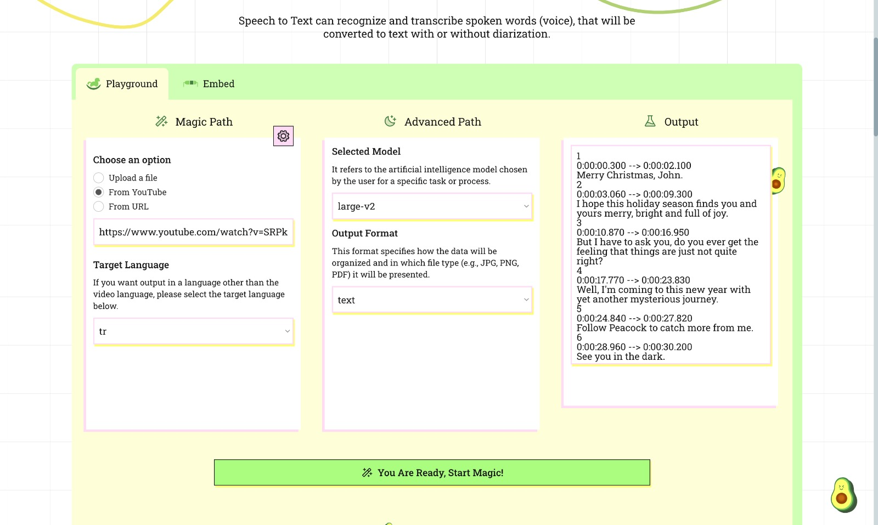Blogs
Blogs
The Ways to Train Your Personalized Chatbot
The Ways to Train Your Personalized Chatbot
The Ways to Train Your Personalized Chatbot
The Ways to Train Your Personalized Chatbot


Crafting the Perfect Prompt: From Speech-to-Text to Chatbot Training
In the ever-evolving landscape of artificial intelligence, the art of prompt engineering has become a crucial skill. As we navigate the complexities of AI-powered content creation, it's essential to understand the nuances of crafting effective prompts. This blog post will guide you through the process of creating prompts that yield high-quality, contextually relevant results.
The Journey Begins: Data Preparation
For those working with video content, the first step often involves transcribing YouTube videos using speech-to-text models. This process transforms spoken words into written text, providing a solid foundation for AI training. Here's how you can leverage speech-to-text in your AI development process:
Video Transcription: Start by selecting the YouTube video you want to use for training. Using a speech-to-text model, you can accurately transcribe the video's audio content into text format.
Data Preparation: Once you have the transcription, you can edit and refine the text as needed. This might involve removing filler words, correcting any transcription errors, or organizing the content into a more structured format.
Creating Training Data: The refined text now becomes valuable training data for your chatbot. This process allows you to tap into the vast reservoir of knowledge available in video format and convert it into a form that AI models can understand and learn from.
From Text to Chatbot: The Training Process
With your transcribed and refined text in hand, you're ready to move on to the chatbot training phase:
Data Input: Upload your prepared text into the AI training platform. Most platforms allow you to input data either as a text file or by pasting it directly into a content field. [*]Training Initiation: Start the training process, allowing the AI model to analyze and learn from the input data. This step is where your chatbot begins to develop its knowledge base and response patterns. [*]Verification: After training, it's crucial to verify that the data has been correctly ingested and processed. Many platforms allow you to review the trained data to ensure accuracy.
Click here to create your speech to text.
The Art of Prompt Engineering
Once your chatbot is trained with the transcribed content, the next critical step is crafting the perfect prompt. A well-designed prompt acts as a guide for your AI, ensuring it generates responses that are accurate, relevant, and aligned with your goals.
For instance, if you want your chatbot to strictly adhere to its training data and communicate in a specific language, you might use a prompt like this:
"You're an intelligent assistant, focused on giving precise and helpful answers. Excel in multi-turn conversations and ask for clarification if needed. You must answer only using the provided context. Always speak Turkish. If the context lacks the information, reply, 'Üzgünüm, eğitimim dışında herhangi bir konuda konuşamam.'"
This prompt sets clear parameters for the AI, ensuring it stays within its trained knowledge base and communicates as desired.
Already done with speech to text?
Let's move on next step — Create your custom chatbot and train with it now! Iterative Improvement
Remember, the process of creating an effective AI-powered content system is iterative. You may need to refine your speech-to-text outputs, adjust your training data, or tweak your prompts to achieve optimal results. Each iteration brings you closer to a more accurate and effective AI assistant.
By mastering the skills of data preparation, AI training, and prompt engineering, you're setting yourself up for success in the exciting world of AI-powered content creation. Embrace the learning process, stay curious, and watch as your AI assistant transforms into a powerful tool for your creative and professional endeavors.
"Keep fighting!"
Batuhan MERGÜZ